Del and Mladen review ‘Fast Color’
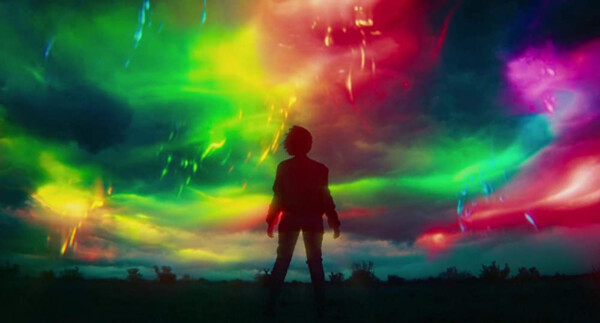
Image courtesy of Lionsgate.
“Fast Color” Starring Gugu Mbatha-Raw, Christopher Denham, Lorraine Toussaint and Sanniya Sidney. Directed by Julia Hart. 100 minutes. Rated PG-13. Hulu.
Del’s take
“Fast Color” is pitched as a superhero movie but it is unlike any superhero movie you’ve ever seen, and I would venture to say it is not a superhero movie at all but a story about three women battling forces, both seen and not, that isolate them from the world but bind them as a family.
It is also one of those quiet, semi-science fiction dramas that slip into and out of the stream of pop entertainment garbage so noiselessly that it will not be noticed unless somebody draws attention to it.
As I watched “Fast Color” I thought of Zenna Henderson’s series of books about The People, immigrant aliens who arrive at Earth after their own world is destroyed. I also thought of the Tim Robbins movie “Code 46,” which also came and went without much fanfare but was a fine, overlooked gem of a film.
In “Fast Color,” Ruth (Gugu Mbatha-Raw) is a mother on the run, pursued by Bill (Christopher Denham), a government scientist eager to exploit Ruth’s psychokinetic abilities to cause earthquakes during the seizures that wrack her body. Ruth flees to her mother Bo’s (Lorraine Toussaint) home where Ruth’s daughter Lila (Sanniya Sidney) lives. Bo is raising Lila because Ruth is broken, a poetic way of saying she’s been struggling with substance addiction and other issues. Bo and Lila also have powers – they can take things apart and put them back together. But something that’s broken? It can’t be fixed – not by their telekinetic powers, at any rate.
That theme of brokenness operates throughout “Fast Color” – in Ruth by her moral flaws, Bo by her inability to fix Ruth and even Lila for her life of concealment, something every gay man and woman on the face of the Earth already understands. The government is broken, usually the case in movies where it is made the antagonist, and even the Earth is broken with climate change rendering water a commodity so precious America’s standard of living has descended to something that resembles the Third World.
The movie also tells us that while magic cannot fix things already broken, love may find a way. As the story winds toward its resolution we see Ruth, Bo and Lila seeking their own paths to redemption, with nary a caped crusader, death ray or dollop of the-fate-of-the-universe-lies-in-their-hands bullshit thrown in for dramatic tension.
The movie unfolds at a languid pace, which I felt was sometimes too slow, and reveals its secrets along the way requiring a patient audience. Its scope is limited and simultaneously expansive as it, like “Nomadland,” is set in the parched Southwest with its infinite horizons and empty landscapes.
The best performance of the film – and many of them are good – was by Toussaint as the suffering mother/grandmother Bo. She brought a regal dignity to the role and succeeded in avoiding the clichés and tropes of the put-upon matriarch who would suffer to spare her children.
I did not like the way Hart chose to end the film as it tended to confirm some of those clichés repudiated by everything that led up to the climax – in fact, the climax seemed more of an anticlimax and could have been reworked to provide more subtextual pop.
Still, “Fast Color” will entertain for its 100 minutes and it’s a good antidote to a lot of the nonsense that passes for science fiction in cinema these days.
I would grade it at a B+.
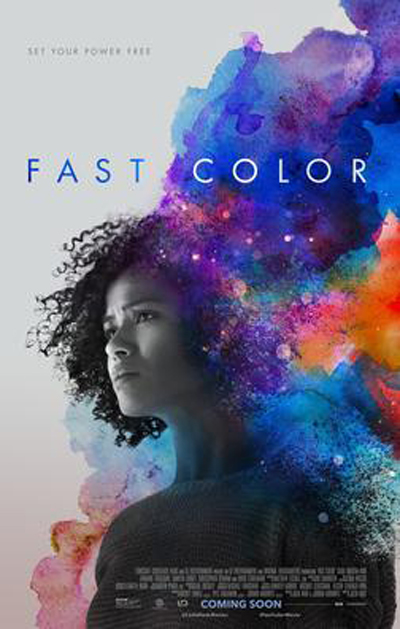
Mladen’s take
I enjoyed “Fast Color,” though it is incorrectly billed, as Del correctly noted.
That the streaming service, producers, studio, whoever or whatever, tried to sucker me with the claim the film is a science fiction adventure doesn’t bother me too much. “Fast Color” is a good, girl relationships movie with occasional doses of a superpower on exhibit. The superpower, by the way, comes in two flavors: controllable by its practitioner or beyond control.
The three women in the film have brains with the capability to deconstruct and reconstruct objects. When our heroines explode objects into millions of sand grain pieces and return those grains to their original uniform form, the process comes with bright, streaking stripes of color.
Best as I can tell, our heroines use the word “color” in their conversations as code for their power. “She sees colors.” “I can’t see colors.” “Does anyone else beside us three see colors?”
Bo, Ruth, and Lila have to talk carefully because they recognize that there are a whole bunch of people on the rain-starved Earth of the future who would try to weaponize their telekinesis, rather than do good with it.
Also, best as I can tell, our heroines are mortal. So, they could be snubbed by the Government if deemed a threat or some Trump-loving nationalistic fascist racist patriot citing God as his source of inspiration and authorization to cancel from the world the un-godly as he defines them.
Personally, though, had I fast color, I wouldn’t be cowering from the billions of stupid people on this planet. I’d discern ways to let those reds, greens, and blues rip to achieve world peace while I worked toward enabling the power to allow me to live forever so that I could travel to edge of the universe.
I can’t recall the soundtrack for “Fast Color,” which is good and bad. Bad in the sense that the score, at least to me, failed to add to the film. Good in that the music didn’t distract the plot. I did enjoy the song about a new day coming about halfway through the film.
“Fast Color” has a pleasantly subdued dystopian feel. The world is dry as in “Mad Max: Fury Road,” but there’s no hyperviolence among warring tribes. In fact, there’s very little violence in “Fast Color.” The director conveys desperation and dearth by showing poor pickins’ on store shelves. More effective is the unceasing reminder that the water well is going dry. Water is ladled into and out of plastic containers marked with red for maximum volume, usually about half of the actual capacity of a jug. There must be no spillage. Check into a motel and you pay for the room and the water. Faucets are useless, bathing wasteful.
However, the reason I give “Fast Color” a B+ like Del is this: Though essentially a girl movie, there’s almost no romance. The lack of romance allows me to forgive the studio for lying about the film’s true genre.
Mladen Rudman is a former journalist and technical writer. Del Stone Jr. is a former journalist and author.
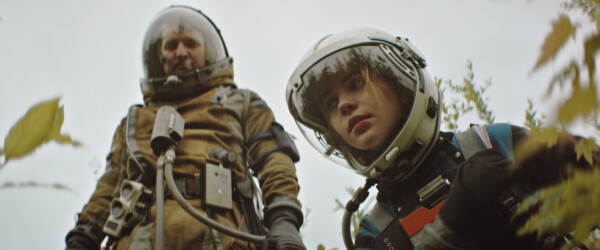
Image courtesy of Dust.
“Prospect” Starring Sophie Thatcher, Jay Duplass, Pedro Pascal and others. Directed by Christopher Caldwell and Zeek Earl. 100 minutes. Rated R. Netflix.
Del’s take
I’m always a little nervous when Mladen chooses the movie to be reviewed. There’s no telling what he’ll come up with – some giant thing crawling out of the muck to wreak havoc on mankind, most likely. But this time Mladen resisted his misanthropic tendencies to recommend a fine little science fiction movie called “Prospect,” and it’s one I think some of you will enjoy.
The plot is simple: A down on his luck prospector and his teenage daughter travel to an alien moon where a cache of valuable gemstone-like objects awaits. Recover those objects and they’ll be able to pay off their debts and lift themselves from the wretchedness of their current existence. But along the way they encounter a couple of rogues who want to jump their claim. And there’s a ticking clock – the freighter they arrived on will depart in a few days and this will be its final trip to the alien moon with its poisonous forests.
The viewpoint character is Cee (Sophie Thatcher), who loves her father but has grown weary of his ne’er-do-well ways and yearns for the life of a normal teenager. Her father Damon (Jay Duplass) is one quick get-rich scheme away from having to chase every other quick get-rich scheme that comes along. On the moon’s surface they encounter Ezra (Pedro Pascal), who in my opinion steals the show as the murderous but ultimately human claim-jumper, he of a dubious but malleable moral code.
What fascinates me about “Prospect” is the world Caldwell and Earl created to frame their story. Gone is the usual sleek, antiseptic science fictiony setting with its focus on technology, gleaming metal and blinking telltales. The world of “Prospect” is littered with garbage, tchotchkes, an alien alphabet and people who are as trashy and disposable as everything around them – in other words, a world very much like the one we live in.
The plot itself is thin, but it works. More money and bigger talent might have cluttered the story with unnecessary and distracting plot subordinates and crappy special effects, but “Prospect” plods along with relative efficiency, focusing on a single imperative: getting off this infernal moon. I say “plod” because at times the action does seem to wallow in needless internal conflict and naval-gazing. It isn’t a plot suitable for an action movie anyway, but the directors could have slain at least a few of their little darlings and moved things along more briskly, with no harm to the pacing and tone.
Another anachronistic artifact – Ezra’s peculiar diction, a strangely stilted form of speech, almost as if he were quoting from 19th century literature – struck me as distracting and superfluous. It reminded me of the dialogue in “Bone Tomahawk” and I still can’t figure out what purpose it served in supporting the character or story. In “Bone Tomahawk” it lent a weird, offbeat humor to the proceedings, but I doubt that was the intent here. Perhaps it was intended to boost the gain of the vaguely western theme? I dunno.
I loved the look and feel of “Prospect.” It was unique and different, and I have not encountered unique and different in a long, long time. The directors eschewed many of the special effects you might expect of a sci-fi flick and that works to the movie’s advantage, enhancing its grungy look and amplifying the dirt-track poverty of its three primary characters.
I think sci-fi fans will appreciate “Prospect’s” virtues but I’m not sure a general audience will feel the same. It enjoyed a brief theatrical release but from there went to video-on-demand.
I’m giving it a B+. Caldwell and Earl did a lot of things right in making this movie and I look forward to their future efforts.
But Mladen gets only a C+ for choosing it. He should have been choosing movies like this all along and not clinkers like “Ice Spiders.”
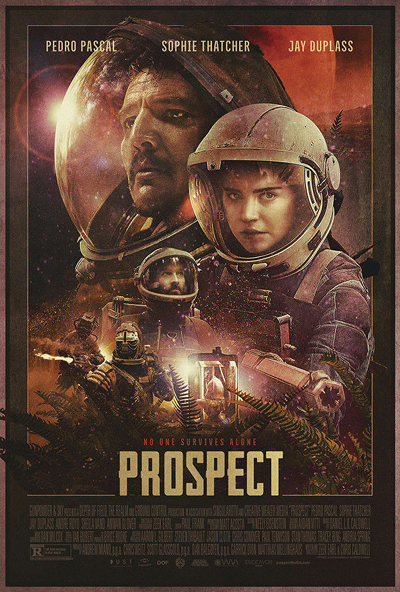
Mladen’s take
Del, though praising “Prospect,” has failed to adore this terrific piece of sci-fi sufficiently. B+ my ass. The sleeper film is an A top to bottom, left to right, and diagonally. “Prospect” is intimate sci-fi such as “Sputnik,” “Arrival,” or “Children of Men,” albeit less provocative intellectually.
There are nothing but exemplary performances in “Prospect.” Where Del chooses Pascal portraying Ezra as the show stealer, I give Thatcher’s Cee equal billing and praise.
Ezra is cunning, but abides the thief’s code of right and wrong as a “fringeling” prospecting and “digging” for gems created by living organisms. I wonder if the beasties, which eat limbs if improperly neutralized because accessing their “aurelac” requires sticking arms into their mouths, were modeled on oysters. Like oysters produce pearls from grains of ingested sand that irritate them, the whatevers on Green seem to create fist-sized aurelac the same way. Neat idea.
Ezra is a well-spoken rogue with boundaries. He has a chance to shoot Cee during a tumultuous encounter, but doesn’t. The way he demonstrates aversion to killing a child is wonderful. Nor did he sell her to god-fearing, convoluted-thinking, brazenly hypocritical religionists for a case full of neatly packed aurelac.
Cee’s reaction, measured in facial expression, when the religionists offer Ezra gems for the “girl” is compelling and authentic. It’s as though the youngster was able to imagine herself actually getting sold like property. Thatcher as Cee demonstrates uncanny acting again and again. From getting high chewing laced gum to a subtle hint of calculation and greed when Ezra offers her the prospect of collecting a fortune in aurelac to the way she urges him to keep moving with the wave of the rail gun in her hand, Thatcher is perfectly comfortable with her role as a resourceful teenager with still girlish interests. Why hasn’t she appeared in more movies? Give me more Pascal, while we’re at it. Caldwell and Earl get your asses in gear and make another movie as excellent as “Prospect.” Feel free to use Thatcher and Pascal again. They were a charismatic de facto father and daughter in “Prospect.” I imagine they could be, say, an effective mercenary duo on Earth or beyond fighting for Mankind’s survival. Maybe giving Thatcher the role of a queen reclaiming her kingdom from an alien race known as the Grist. Pascal could be a cyborg playing both sides until he witnesses the horror of Grist assimilating people.
Directors Caldwell and Earl understand that the guts of a movie is the story as captured by a good script. Visual effects can augment, never replace, solid writing and acting. In “Prospect,” the VFX are spot-on. A worn-down hi-tech world is assumed. The sound effects – the thunk of lander latches releasing, the rumble of thrusters, materials vibrating during re-entry, the clanking of “thrower” projectiles sent into hypervelocity motion – are very good, too. A soon-to-be-discontinued commuter line runs to the aurelac moon. Why discontinued? Probably because it’s no longer profitable now that the gem rush has come and gone. Who gives a shit about flora and fauna on Green, or studying it, when there ain’t no more money to be made? As the major points out in the less good, though still worth watching “Ad Astra,” humans are world eaters. Always will be.
“Prospect” is the whole works wrapped into a precise and efficient plot. The whole works includes the score. I paid attention to the soundtrack watching the movie and I listened to the soundtrack as its own medium. It’s very, very good. Have to hand it to composer Daniel L.K. Caldwell. He chose the correct orchestra and boys choir to immerse me in the moodiness of the story.
Yup, this film will be added to my Blu-ray collection. It’s that good.
Mladen Rudman is a former journalist and technical writer. Del Stone Jr. is a former journalist and author.
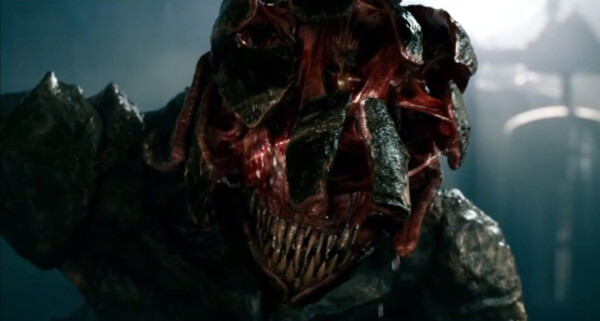
Image courtesy of Paramount.
“A Quiet Place” Starring Emily Blunt, John Krasinski, Millicent Simmonds and Noah Jupe. Directed by John Krasinski. 90 minutes. Rated PG-13.
Del’s take
“A Quiet Place” is relentlessly tense. To be honest, I was relieved when the movie ended because throughout, my stomach was cinched into a knot. It has a couple of problems, but overall it’s a good value for your entertainment dollar and I recommend it.
It’s directed by John Krasinski of “The Office” fame, but Emily Blunt, who plays his wife both on and offscreen, has been getting top billing. Krasinski also directed the film. I’ve always wondered how that works. If you screw up a scene, do you get mad and yell at yourself?
The story is about a family trying to survive the emergence of a blind super predator that hunts by sound. I was a little unclear as to where the predators came from. Are they extraterrestrials? Demons? Genetic mutations? I don’t think the movie made that clear, but reviewers are calling them aliens so I’ll go with that.

The Abbott family lives on an abandoned farm in the countryside, never speaking, never wearing shoes, never doing anything that might reveal their presence to the monsters. They communicate through sign language and scatter sand along their footpaths to muffle the sound of their tread.
The first anecdote of the movie ratchets up the tension to an unbearable level. The family is scavenging for supplies in a nearby town. Their youngest, a little boy named Beau, finds a battery-operated space shuttle toy and wants to play with it, but Krasinski takes it away from him and removes the batteries, explaining the toy is too loud. Later, Beau’s big sister Regan (Simmonds) gives him the toy, and as they’re leaving Beau grabs the batteries.
As they’re walking back to the farmhouse the boy falls behind – because he’s loading the batteries into the toy. When he turns it on it begins to emit loud sounds, and what you fear might happen … well … it actually happens.
Cut to a year later. Blunt is pregnant. Otherwise, nothing has changed. Well, not quite. Regan blames herself for her little brother’s death. She thinks her father hates her. She doesn’t feel welcome in the family, even after her dad tries to invent a turbocharged hearing aid that might repair her deafness. The Abbotts’ other son, Marcus (Jupe), is more terrified of the monsters than the rest of the family and doesn’t think his father will keep them safe. Turns out he should be afraid.
I won’t say anything more about the plot. I don’t want to spoil it for you. Suffice it to say everything that follows cranks up the tension to the point you will be breaking for the bathroom or snack bar just to get your heart back in sync, like I did during a certain scene involving a nail.
But yes, in my opinion the movie had a few problems. The story supposedly takes place between one and two years after the creatures arrive, yet the town the Abbotts raid for supplies looks like it’s been abandoned for many years. By the same token, the farm where they hide is surrounded by lovingly cultivated fields of corn, which could not have been accomplished without the use of heavy – and loud – machinery.
And what’s with this baby thing? Why would they bring a baby into this world? And aren’t babies loud? I mean, really, really loud?
If the monsters are attracted to sound, why couldn’t Krasinsky set up some speakers in the middle of that corn field, crank up the Iggy Pop and blast the monsters to smithereens when they show up?
Details, details.
Apart from those gripes, “A Quiet Place” is a super tense, super scary movie that should appeal to both fans and non-fans of horror. See it in a movie theater. Don’t wait for it to show up on Netflix or Prime.
While I’m at it, let me recommend the smartphone app MoviePass. You pay $7 a month for one theatrical release – per day. Thirty-one movies for $7? I don’t know how they make money at it, but somehow they must.
That’s how we got to see “A Quiet Place.”
I give it a B+.
Del Stone Jr. is a former journalist and author.

Image courtesy of Universal Pictures.
“Pacific Rim: Uprising” Starring John Boyega, Scott Eastwood and Cailee Spaeny. Directed by Steven S. DeKnight. 111 minutes. Rated PG-13.
Del’s take
I had great hopes for the original “Pacific Rim” and came away greatly disappointed, so my expectations of “Pacific Rim: Uprising” were minimal. But what the hell. It was a rainy Sunday afternoon and while I had a crap-ton of stuff that needed doing, I didn’t feel like doing any of it. “Uprising” it was.
And hey, guess what? It didn’t suck as bad as I thought it would. Let’s face it: You don’t go to a “Transformers” or “Pacific Rim” movie for the social commentary or existential angst. You go to see giant monsters and robots beat the shit out of each other, destroying cities in the process. In that meager capacity “Uprising” did not disappoint.
The movie stars John Boyega as Jake Pentecost, son of Idris Elba’s Stacker Pentecost from the original movie. Stacker was the marshal of the Jaeger corps, giant robots built to defend humanity from the Kaiju, equally giant monsters from another dimension that entered this world through a breach in the Pacific Ocean floor. Stacker is revered for his role in sealing the breach and saving the world.
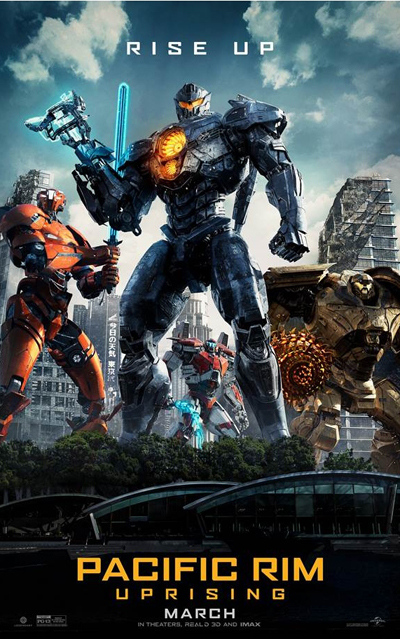
Jake, once a promising Jaeger pilot himself, has given up his career to become a petty criminal. During a theft gone wrong he meets young Amara Namani (Spaeny), who has built her own Jaeger called Scrapper. Because it is against the law to own unregistered Jaegers, Amara and Jake are hauled in by the authorities. Instead of being jailed they’re sent to the Jaeger corps, where Jake is to resume his old job and Amara becomes a cadet.
The Shao Corporation has a plan to replace Jaegers with huge, robotic drones, and I won’t say any more about that because it would spoil the movie for you. Suffice it to say “Uprising” becomes more action-oriented with the second act and continues through the third.
John Boyega does a good job with his role and shows he can act outside of “Star Wars.” He manages to bring a little more oomph to his role, which is saddled with clichés. I last saw Scott Eastwood in “The Fate of the Furious” and he was about as wooden as a ventriloquist’s dummy. His acting has improved and at times he seems almost human, so there’s hope. Spaeny is a natural for the screen. I think we’ll be seeing a lot of her in the future.
I think this movie was better written than the original. The dialogue was an improvement. It didn’t strike me as silly and fanboyish as del Torro’s script.
The flaws? I’m sure there were plenty. The premise itself is the biggest flaw of all. But I turned off that part of my brain before I walked into the theater. Again, you don’t watch a “Transformers” or “Pacific Rim” to appreciate the logic or scientific accuracy. The movie panders to a Chinese audience so if you have a problem with that, be prepared.
“Uprising” sets up a sequel, and I initially thought that wouldn’t happen until I checked the overseas grosses. Domestically it has earned just south of $60 million, with a budget of $150 million. But worldwide? A whopping $275 million for a $333 million cume, so I guess we can expect a “Pacific Rim: Domination.” Way to go, Chinese audience.
Don’t get me wrong: “Uprising” is an entertaining and even fun movie if your expectations aren’t too high. But don’t expect much in the way of depth.
I give it a B-.
Del Stone Jr. is a former journalist and author.
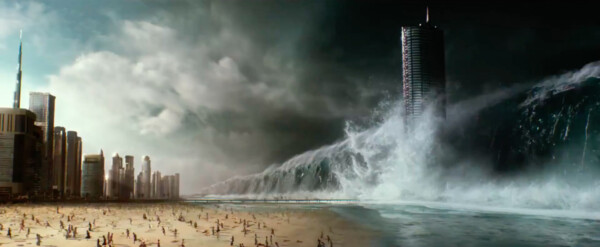
Image courtesy of Warner Bros.
“Geostorm” Starring Gerald Butler as Jake Lawson, Jim Sturgess as Max Lawson, Abbie Cornish as Sarah Wilson, Talitha Eliana Bateman as Hannah Lawson, Alexandra Maria Lara as Ute Fassbinder, and others. Directed by Dean Devlin. PG-13. 109 minutes. Streaming on Hulu.
Del’s take
Every now and then a movie comes along that makes me feel pretty good about my own creative efforts. “Geostorm” makes me feel like a goddamn genius.
“Geostorm” is dumb even by Mladen’s low standards, which lie somewhere between root cellar and hell. I can tell how much I hate a movie by the number of times I roll my eyes. By the end of “Geostorm” I needed Dramamine and one of those little fold-out paper bags the airline puts in your seat pocket. It’s that bad.
Which is weird because they spent a lot of money making the damn thing – $120 million – and got some decent actors – Andy Garcia, Abbie Cornish, Jim Sturgess and Ed Harris – Ed freaking Harris! who should have won an Oscar for “The Truman Show” and might be my favorite actor of all time. How could a movie with such great talent go so terribly wrong?
Reason No. 1: Gerard Butler.
Giving Gerard Butler the lead was a mistake. Don’t get me wrong. I like Mr. Butler. He’s a reliable disaster movie performer – check “Greenland” and “Angel has Fallen.” Unfortunately, he’s also one of those actors whose face falls out of memory faster than giant hailstones fall out of the sky over Tokyo. I had to consult my Old Fart’s Digital Crutch, Msgr. Google, for other movies he’s starred in. Not a good sign.
Reason No. 2: Dean Devlin.
“Geostorm” was directed by Mr. Devlin, a graduate of the Roland Emmerich school of disaster filmmaking – except in this case he forgot to study for the final. For a disaster movie, you see remarkably few disasters. What you do see is a clunky whodunit plot that did little to pique my interest. I assumed the bad guy was either (a) an evil corporation dissatisfied with trillion-dollar profit margins, or (b) a Republican. Either way, the who was less important to me than the what. Dammit, Jim, I want my disaster movies to show disasters, not be disasters.
Reason No. 3: Some seriously freaking tectonic logic flaws.
“Geostorm” is predicated on the idea that escalating weather disasters will lead to a gigantic, all-consuming “geostorm,” the meteorological equivalent of Donald Trump’s political and business “empire.” So all nations on Earth marshal their resources to build a gigantic hairnet-kinda thing in orbit that has the ability to nip weather disasters in the bud.
First, let me point out the words “climate change” are not, to my recollection, ever uttered in this movie, which makes me wonder why, given that escalating weather disasters are the hallmark of climate change. Also, the suggestion that all nations (a) recognize the problem and (b) agree to cooperate isn’t science fiction. It’s fantasy. It destroys my willingness to suspend disbelief.
Second, the giant hairnet thingy is just – freaking – impossible. And building it would cost a helluva lot more than doing the things that already cause the hairpieces of conservatives and Republicans to spontaneously combust, things like planting trees, developing more efficient batteries, or inventing a fusion reactor. Is “Geostorm” a disaster flick or “Lord of the Rings”?
Speaking of which, it wouldn’t be a disaster movie unless there was (a) an MIA father who’s feeling guilty about his absence, (b) a child who’s pissed-off because Daddy “wasn’t there,” and (c) an estranged relationship that can only be mended by tens of millions of people dying in a global conflagration.
Yup, that’s “Geostorm,” a melding of all the worst aspects of “2012,” “Independence Day,” “Twister,” and maybe even “The Towering Inferno” and “The Poseidon Adventure.” And to enhance your eye-rolling experience, it’s streaming on Hulu, which is the “Geostorm” of streaming services. I have never, ever streamed a movie on Hulu without something going wrong – the movie buffers, it locks up, the frame crashes and will not play, no matter how many times I clear my cache. I end up digging through my DVDs and watching it the old-fashioned way.
Movies like “Geostorm” are supposed to be dumb fun. Devlin forgot the “fun” part. I give it a D, and I don’t care how many insulting giant hailstones Mladen flings my way.

Mladen’s take
I like sci-fi that uses real-world happenings taking place on Earth to be plausible. So, when “Geostorm” showed moviegoers a low-orbit satellite mesh controlled by a space station that manipulates the planet’s weather to limit the impact of global warming, I was, like, this is silly. How could anyone, even a let-the-imagination-loose filmmaker, think that leashing the weather caused by Earth’s 4.2 billion cubic kilometers of atmosphere, 1.4 cubic km of ocean, and 510 million km of surface land area was doable as a realistic sci-fi movie?
Well, “Geostorm” writers and its director were much more on-target with their movie’s foundational theme than I figured. The October 2023 issue of Scientific American has a story titled, “A Stratospheric Gamble.” It covers some of the ways some scientists are hoping to alter Earth to lessen the impact of climate change. SRM (Solar Radiation Management), folks, is on its way. What is SRM? Injecting volcanic eruption-size quantities of sulfur dioxide into the atmosphere to bounce some sunlight back to space. Lab coat geeks and governments (including our own) are thinking seriously about using geoengineering technology on a PLANETARY scale to mitigate the climate crisis, which was caused by our transportation and power generation technologies. Same old story and a history lesson never learned. Using new technology to offset the dangerous side effects of old technology always fails long-term and it’s always the poor who suffer.
So, the “Geostorm” scenario ain’t so unrealistic as it seemed to me before I read the Sci Am piece. That fact, paradoxically, allowed me to enjoy the film, more or less. In “Geostorm” the weather control space station starts to malfunction, causing its weather-inducing satellites to go berserk. An Afghan village is frozen to death. A part of Hong Kong is blasted to bits by overheating natural gas infrastructure. Lawson (Butler), the principal architect of the space station and an imperfect brother and father, is sent back to his orbiting masterpiece to determine what the hell is going on. As human command and control of the space station and its satellites continues to deteriorate, so does the weather on Earth. Incessant, infrastructure-destroying lightning in Florida that, somehow, increases the value of Mar-a-Lago. OK, I made up the part about Mar-a-Lago. A tsunami flooding one of the Persian Gulf’s fascist states. A flock of tornadoes here and hail the size of Thanksgiving turkeys there.
Del, and his combustible grudges, be damned. It’s a wonder he didn’t mention how the female commander of the space station becomes a weakling leader when Lawson embarks to save the day. Look, I agree with Del that “Geostorm” is maudlin and too much political thriller troupe. But, he should’ve been paying attention to the portrayed weather disasters. Del, start digging that bunker, fill it with canned goods, and make sure it has a helluva water pump to keep it dry because a geostorm is on the way, though it’ll come with a much less dramatic name – solar radiation management. And, rather than stocking the bunker with Dramamine, I suggest Xanax to help you with anger management.
Del contends “Geostorm” is bad crap. Ignore him. The film is good crap.
Mladen Rudman is a former newspaper reporter and technical writer. Del Stone Jr. is a former journalist and writer.
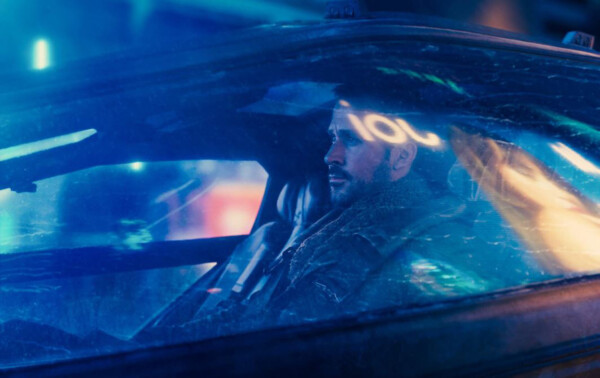
Image courtesy of Warner Brothers.
“Blade Runner 2049” Starring Ryan Gosling, Harrison Ford, Robin Wright and Sylvia Hoeks. Directed by Dennis Villeneuve. 2 hours, 44 minutes. Rated R.
Del’s take
As I purchased my ticket for “Blade Runner 2049” the ticket taker said, “It’s entirely possible you will be the only person in the theater.”
He was almost right.
Initially I was the only person in the theater. I frantically texted my movie-going crony, Dusty. “Please hurry. I am the only one in the theater. It’s creepy.”
By the time the movie started there were 13 other individuals with us, not an auspicious showing for a much-ballyhooed sequel to a movie legend.
The original “Blade Runner” didn’t do much at the box office, pulling in a little over $32 million domestically over its lifetime. “2049” seems headed to a similar fate. The film has so far grossed $60 million and may never earn back its $155-plus million expenses.
That’s too bad because it’s a worthy successor to the original Ridley Scott classic, despite the fact that audiences don’t seem to care.
I suspect “2049’s” major problem is that contemporary moviegoers are too lazy to enjoy a movie that builds its tension slowly and requires audiences to think. Why should audiences think when they can coast along in a state of lobotomy-like bliss, voting for Donald Trump and watching crap like the upcoming “Geo Storm”?
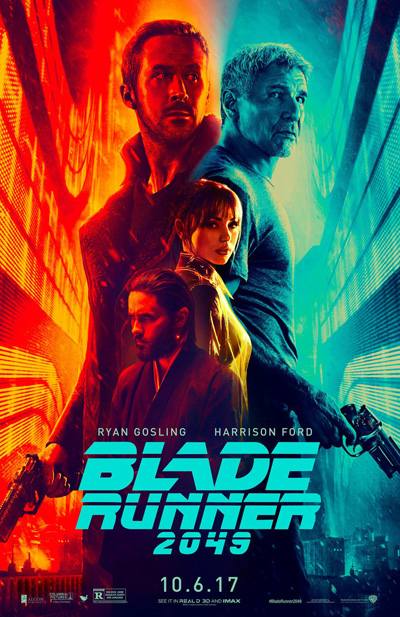
In “2049” Ryan Gosling is Officer K, a replicant hunter who belongs to a new generation of the genetically engineered lifeforms himself, compliant slaves who do what they are told. When he is ordered to investigate a possible older-generation replicant hiding in the environmental wasteland that Southern California has become, he tumbles onto a larger mystery that promises to “break the world,” as Lieutenant Joshi (Wright) puts it.
What follows is a journey across the hellscape of Los Angeles and beyond in search of the truth, which eventually leads K to Deckard (Ford) and a confrontation with agents of the Wallace Corporation, manufacturer of the new, compliant replicants. Wallace is headed by the cool-handed Neander Wallace (Leto), who is looking for a way to make replicants faster. Does K hold the solution to that problem?
“2049” is a replicant itself, duplicating the mood and pacing of the original “Blade Runner.” The score evokes the original Tangerine Dream soundtrack yet diverges in strange and interesting ways. The noir ingredients are still there – endless rain, sometimes interrupted by snow. Neon signs with gigantic holograms confronting pedestrians about their shopping choices. Retro technology and clothing styles. At any moment I expected to see Daryl Hannah back-handspringing into the fray.
Gosling measures up to Ford’s original performance, offering the same world-weary yet hopeful emotional resonance to the possibility that maybe, just maybe, there is more to his manufactured life than even his makers were aware of. His exchanges with his holographic lover Joi (Anna de Armas) are simultaneously touching and heartbreaking. To know that these two artificial entities – one grown in a vat, the other digital – constitute all that is good about this world damns the future with sadness and futility.
The movie is long, almost three hours, and therein lies its flaw. The pacing is glacial – not the post global warming “glacial” of retreat, but the inch-a-year growth of ice before mankind dumped his pollution and greenhouse gases into the atmosphere. At times director Villeneuve seems to love his creation so madly he dwells on unimportant details, unwilling to slay his darlings as it were. It feels every bit as much as a three-hour movie.
Still, it’s three hours of arresting visuals, soaring music, and tantalizing questions: Who else might be a replicant? Will these new replicants throw off their designed constraints and launch a revolution? How will mankind survive without its slave labor force?
Fans of the original should catch “2049” in a movie theater to enjoy its visuals in their native habitat. Newcomers should probably watch the 1982 original before venturing to the theater.
Watch it now, because if “2049” doesn’t start making money soon, it may be another 35 years before we see Part 3.
Del Stone Jr. is a former journalist and author.
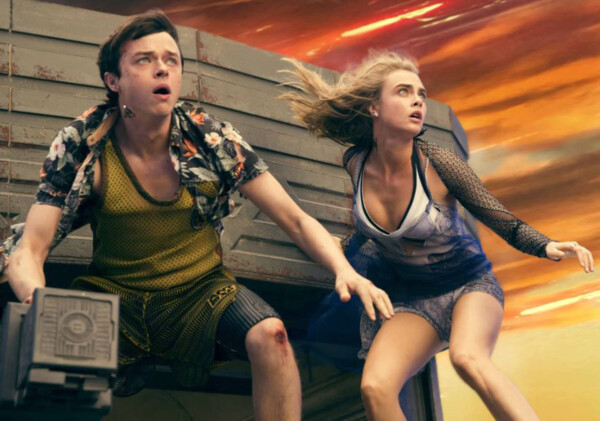
Image courtesy of STX Entertainment.
“Valerian and the City of a Thousand Planets” Staring Dane Dehaan, Cara Delevinge, Clive Owen, Rihanna, Rutger Hauer and Ethan Hawke. Directed by Luc Besson. 137 minutes. Rated PG-13.
Mladen’s take
It’s tough to criticize a mediocre movie such as “Valerian,” which I saw opening weekend. The film had some terrific scenes and a dose of charm. Unfortunately, all of them came in the first 30 to 40 minutes.
There was the pithy beginning which spanned some 400 years of space-time. It cleverly explained how we got to the period covered in the vividly constructed movie by “Fifth Element” director Luc Besson. There was even something pleasant about the peaceful extraterrestrial world that we see destroyed by massive disabled interstellar fighting ships falling from the sky during a battle. That world, the world of the Mul, reminded me of the hermit crab terrariums tourists find in the campy souvenir stores in my Northwest Florida hometown. Mul land was all oversized shells, lots of sand, and calm blue water.
My favorite part of the film depicted our heroes, Valerian and Laureline, recovering a “converter” amid a trans dimensional brawl. Particularly clever was the way Besson depicted Valerian trying to fight and survive while different parts of his body were stuck in two separate realities.
Then, the movie falters. It’s not that any one scene was bad. They just lacked spunk. Plus, the youngsters playing the heroes lacked the street creds that were needed to make their cause inspiring.
I’m irritated that the movie’s marketing listed Rutger Hauer and John Goodman as stars. Hauer, perhaps best known for his role as the soldier clone with a tortured soul in “Blade Runner,” appeared for, maybe, 2 minutes. Goodman provided the voice for a Jabba the Hut-sequel pawnshop owner and mobster. That lasted, maybe, 3 or 4 minutes. Clive Owen, who was superb in the lead role in “Children of Men,” a magnificent sci-fi film that, for some reason, has gone largely unrecognized by moviedom, missed the mark as a fiendish military commander trying to hide a severe misdeed. Ethan Hawke also played a supporting role, but it was unimpressive.
And, there was some crappy editing. The scene with a famous singer/dancer portraying a shapeshifting illegal alien was completely unnecessary. The sequence should’ve been cut, saving the audience about 7 or 8 minutes of frustration. Finally, ‘Valerian’s’ PG-13 rating was a disservice. Well-placed strategic cussing and blood and gut splatter would have given the film a more mature feeling.
Valerian will not become a cult favorite as happened with Besson’s ‘Fifth Element.’ Is the film worth seeing in the theater? Maybe. It’s your dime.

Del’s take
I’m no expert on science fiction. I read it, write it and watch it. When I do I am mostly having fun, not looking for ways to enlarge my brain.
But even so woeful a student as I have noticed a fundamental difference in the way European directors approach SF opposed to their American counterparts (and I might extend that difference to writers, too).
American science fiction strikes me as techno-centric, while in Europe it’s all about style. “Valerian” is a good example.
Besson is a talented director who imbues his films with color, beauty and wit. His characters are usually interesting, including their flaws (they don’t get much more flawed than Jean Reno in “Leon: The Professional”).
His last outing into things outer space was the stylish and funny “The Fifth Element,” which has become a science fiction fan favorite, if not a cult film.
“Valerian” is also stylish and sometimes funny. But it lacks the snappy screenplay and perfect casting of “The Fifth Element,” resulting in a kind of chubby “Fifth Element” lite that bores as much as it entertains.
Valerian (Dehaan) and Sgt. Laureline (Delevinge) are 28th century cop partners who are driven to investigate a mysterious radioactive dead spot growing within Alpha, a spaceborne city that has accreted over the centuries to become a galactic meeting center for spacefaring races. The two are thrown into an Indiana Jones-style quest to solve the mystery and correct a terrible wrong. Simultaneously, Valerian is smitten by Sgt. Laureline and determined to win her hand in marriage, despite his reputation as a womanizer.
The movie is a feast for the eyes, blazing with vibrant colors and new ideas about aliens and their environments. While other science fiction properties are content with forehead ridges or glued-on ear extensions (ahem, “Star Trek,” this might be you I’m knocking), “Valerian” gives us weirdly unique critters the likes of which I haven’t seen since “Babylon 5.”
But the story is pretty much standard fare, the-universe-hangs-in-the-balance popcorn that does not explore any new ideas or challenge your ideas about the universe like the really good science fiction films, for example “2001” or “Arrival.” In fairness, it’s not supposed to.
The movie is overweight with unnecessary scenes. Mladen pointed out one offender, a performance by Rihanna that could easily have been cut. Seems Besson must have at least one song and dance number in each of his movies, which is a shame. If he had slain his little darlings, “Valerian” would have moved ahead at warp speed instead of plodding on impulse power.
My big gripe was in the casting. Don’t get me wrong – I’m a huge fan of Dane Dehaan. If you haven’t seen “Chronicle” you’re missing a science fiction treat. But Dehaan is wasted in the Valerian role, which plays to none of his strengths. As a love interest for Delevinge he fails completely, coming across as a moonstruck adolescent pining to get laid, sadly unlike his tough but likeable and romantic predecessor, Korben Dallas of “The Fifth Element.”
I was forewarned Delevinge was a bad actor, but she seemed fine in her role, at times outshining Dehaan and others sharing the screen. Mladen is right. Rutger Hauer’s role can be measured in seconds and Ethan Hawke is on the screen and gone before you can ask “Is it over yet?”
“Valerian” isn’t a bad movie. I credit Besson for giving us an alternative to the caped dreck pouring out of Hollywood’s hind-end like a bad bout of Montezuma’s Revenge (I can see it now … “MONTEZUMA’S REVENGE … the dark tide rises!). I wish it had been shorter, smarter, and better cast, but I guess you can’t have it all.
Absolutely see it at the theater. It’s stunning visuals will be lost on the small screen, unless you’ve got a curved wall-o’-TV parked in your living room.
Oh, and do watch “Chronicle.”
I give “Valerian” a B for originality and visual presence.
Mladen Rudman is a former journalist and technical editor. Del Stone Jr. is a former journalist and author.
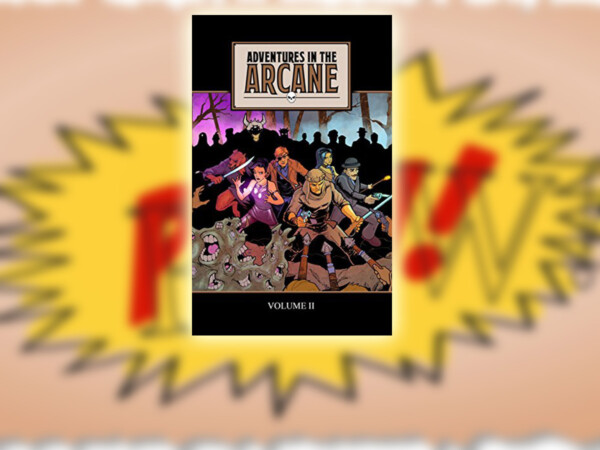
[ Primary image courtesy of Free SVG ]
From Amazon:
Adventures in the Arcane is back! And we’ve expanded to eight thrilling stories. The characters you love from Volume I return, including Captain Argo, Dominic Ashwood, Waylon and Jester, Dempsey and Drood.
Our guest authors, including pulp legend Ron Goulart, bring you four terrific tales guaranteed to set your heart racing. Inside you’ll find femme fatales, vengeful ghosts, mysterious islands, and deadly dream worlds.
Lock your door, brew some coffee, and light a candle. Then open this book and prepare to be thrilled!
A Syndicate Production featuring the work of Mark Boss, S. Brady Calhoun, Ruth Corley, Mark Douglas Jr., Ron Goulart, Jayson Kretzer, Tony Simmons, and Del Stone Jr.
If you would like to order a copy of “Adventures in the Arcane, Volume II,” following this link.
About the author:
Del Stone Jr. is a professional fiction writer. He is known primarily for his work in the contemporary dark fiction field, but has also published science fiction and contemporary fantasy. Stone’s stories, poetry and scripts have appeared in publications such as Amazing Stories, Eldritch Tales, and Bantam-Spectra’s Full Spectrum. His short fiction has been published in The Year’s Best Horror Stories XXII; Alfred Hitchcock’s Mystery Magazine; the Pocket Books anthology More Phobias; the Barnes & Noble anthologies 100 Wicked Little Witch Stories, Horrors! 365 Scary Stories, and 100 Astounding Little Alien Stories; the HWA anthology Psychos; and other short fiction venues, like Blood Muse, Live Without a Net, Zombiesque and Sex Macabre. Stone’s comic book debut was in the Clive Barker series of books, Hellraiser, published by Marvel/Epic and reprinted in The Best of Hellraiser anthology. He has also published stories in Penthouse Comix, and worked with artist Dave Dorman on many projects, including the illustrated novella “Roadkill,” a short story for the Andrew Vachss anthology Underground from Dark Horse, an ashcan titled “December” for Hero Illustrated, and several of Dorman’s Wasted Lands novellas and comics, such as Rail from Image and “The Uninvited.” Stone’s novel, Dead Heat, won the 1996 International Horror Guild’s award for best first novel and was a runner-up for the Bram Stoker Award. Stone has also been a finalist for the IHG award for short fiction, the British Fantasy Award for best novella, and a semifinalist for the Nebula and Writers of the Future awards. His stories have appeared in anthologies that have won the Bram Stoker Award and the World Fantasy Award. Two of his works were optioned for film, the novella “Black Tide” and short story “Crisis Line.”
Stone recently retired after a 41-year career in journalism. He won numerous awards for his work, and in 1986 was named Florida’s best columnist in his circulation division by the Florida Society of Newspaper Editors. In 2001 he received an honorable mention from the National Lesbian and Gay Journalists Association for his essay “When Freedom of Speech Ends” and in 2003 he was voted Best of the Best in the category of columnists by Emerald Coast Magazine. He participated in book signings and awareness campaigns, and was a guest on local television and radio programs.
As an addendum, Stone is single, kills tomatoes and morning glories with ruthless efficiency, once tied the stem of a cocktail cherry in a knot with his tongue, and carries a permanent scar on his chest after having been shot with a paintball gun. He’s in his 60s as of this writing but doesn’t look a day over 94.
Contact Del at [email protected]. He is also on Facebook, twitter, Pinterest, tumblr, TikTok, Ello and Instagram. Visit his website at delstonejr.com .
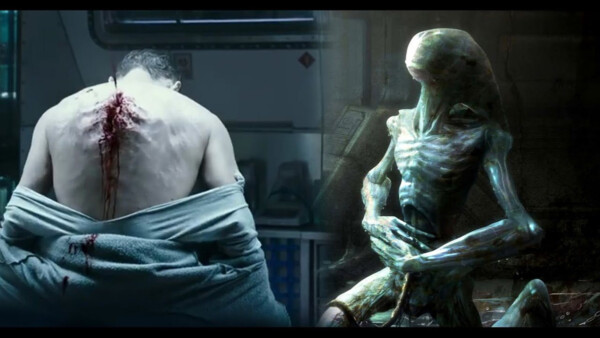
Image courtesy of 20th Century Fox.
“Alien: Covenant” Starring Michael Fassbender, Katherine Waterston, Billy Crudup, Danny McBridge, Demian Bichir. Directed by Ridley Scott. 122 minutes. Rated R.
Del’s take
“Alien: Covenant” is probably the movie you wish “Prometheus” had been.
It has a lot going for it: Storytelling is slick and efficient, eschewing junked-up plots and mystical mumbo-jumbo. Characterization is improved, with believable people speaking believable lines. And it does a creditable job of untangling the execrable birds’ nest of plotlines and unanswered questions presented by the afore-mentioned predecessor.
Director Ridley Scott sticks with the familiar and tries to evoke the grime and claustrophobia of “Alien,” while at the same time throwing in the rough-hewn desperation of “Aliens.” That’s where “Covenant” goes awry. In parts it is not so much an homage to the first two and best entries in the “Alien” canon but a blatant ripoff worthy of a J.J. Abrams flick.
Still, it’s not a bad movie and it puts the “Alien” franchise back on course with the possibility of future interesting sequels. For those all these reasons you should see it.
The movie stars Michael Fassbender as David or, schizophrenically, Walter, the yin and the yang of the story’s synthetic characters. Walter is a newer, more hepped up version of David who, unfortunately or fortunately, depending on your point of view, has been stripped of his ability to “create.” That ability also prevents him from slaughtering human beings; feel free to decide if that’s a good or bad thing. I personally feel it’s bad, but hey – no judgments here.
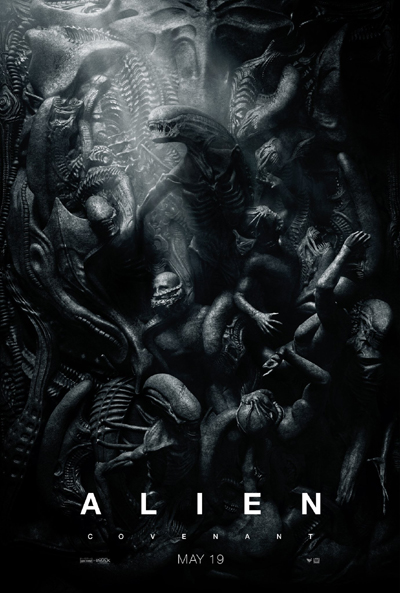
Walter is on board a colony ship headed for a distant planet when suddenly a neutrino storm strikes and the ship is disabled. The crewmembers are awakened from their hibernation pods to deal with the crisis and discover a closer planet more conducive to life. They are made aware of its existence by an incoming signal.
Hmmm. Where have we seen THAT before?
Upon awakening Katherine Waterston, who plays Daniels, almost immediately becomes the victim of a tragedy, one that ultimately brings the entire ship, crew and passengers into the jaws of peril. The tragedy potential is compounded when the decision is made to check out this signal, and this great new party spot on this interstellar pub crawl.
They land on a stormy planet to find a shattered city and the mummified corpses of thousands of its residents, the tall beings from “Prometheus.” Oh, and there’s another weird wreck of a U-shaped spaceship and finally David, who has lived here over the 10 years since the Prometheus disappeared.
They say idle hands are the devil’s playthings, and David has been very, very idle, or should we say very, very busy. Busy with what I won’t say, because that represents an answer to a critical question and it sets up the premise of the sequel. Suffice it to say Walter’s creators had good reason to leave out his creativity chip.
Apart from an opening soliloquy which could have been omitted without any loss to the film, “Covenant” moves along at a brisk pace, alternating between explanation and action. It does not feel like a two-hour movie. Scott, when he isn’t hobbled by a crappy screenplay, can still direct a lean and mean fighting machine of a film.
Fassbender is again superb as David and Walter, slipping back and forth between a polished Oxford and Midwest twang of accents with ease. Waterston is a kind of Signourney Weaver lite trying to fill the Ripley bandolier, but she doesn’t quite carry it off. Billy Crudup makes for a good sniveling Oram, the indecisive, overly religious mission commander who wants the crew to both love and respect him and succeeds at neither, The others are functionally cannon fodder who do rise above their meager contributions, so overall the acting component is effective.
The problem with “Covenant” is that it harkens back too often and too distinctly to “Alien” and “Aliens.” Let me count some of the ways:
1. The crew is summoned to an alien moon by a signal of unknown origin – check.
2. Crawling through dark passageways lit by strobes and punctuated by screaming alarms – check.
3. A rough ride to the surface in a drop ship led by a cowardly commander – check.
4. A tough female lead telling her fellow survivors, “We will seal off the accessways hatch by hatch and blow this motherfucker into outer space” – check.
5. The same tough female lead doing battle with the monster using a large piece of equipment – check.
Even the soundtrack borrows heavily from “Alien,” “Aliens” and “Prometheus.”
There were moments when I thought I was watching Ripley do battle with her extraterrestrial antagonist – THAT’s how similar the tone, pacing and more subtle ingredients, like color palette, were to those earlier movies.
That’s a problem for “Covenant” because those elements don’t mix well. “Alien” and “Aliens,” while sharing a similar premise, are two dramatically different movies, each with its own formulary for pacing and tension. You can’t blend the two and come away with a terrific cinematic experience no more than you can blend a pizza with a cheesecake and come away with a terrific gastronomic experience.
“Covenant” achieves a kind of limited success by answering questions and propelling the series into the realm of sequels, but its reliance on what has come before renders it into a derivative mashup that handicaps its ranking in the “Alien” pantheon. Of all the movies I would rate “Alien” the best with “Aliens” running a very close second. “Alien 3” was essentially a music video that nonetheless had an interesting look and feel, although it squandered all the grandeur of its predecessors. The Winona Ryder “Alien” was insipid and banal, and “Prometheus” was an unmitigated disaster.
Therefore I would place “Covenant” at a distant third on the list, and give it a generous grade of B.
Del Stone Jr. is a former journalist and author.
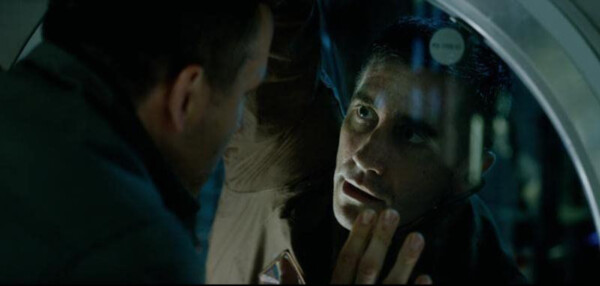
Image courtesy of Columbia Pictures.
“Life” Starring Jake Gyllenhaal, Rebecca Ferguson, and Ryan Reynolds. Directed by Daniel Espinosa. 104 Minutes. Rated R.
Del’s take
If you come away from “Life” with a strong sense of déjà vu, be not afraid. You’ve seen it before.
You saw it with “Alien.” You saw it with “Gravity.” You even saw it with “Invasion of the Body Snatchers.” “Life” is a 1950s-style science fiction B movie with 21st century special effects and a top-shelf budget and roster of actors. But despite the qualities and resources working in its favor, “Life” fails to generate much heat at the launch pad.
The story is standard-fare sci-fi/horror: A probe delivers soil samples from Mars to a crew aboard the International Space Station. An exobiologist discovers a protozoan-like organism in one of the samples and unwisely revives it. Then, as we have learned from countless sci-fi/horror films, the exobiologist unwisely feeds the organism and watches it grow until the day it abruptly decides glucose solution isn’t very appetizing and something heartier that will stick to its translucent ribs would be a better choice of menus.
There are no McRib sandwiches in outer space.
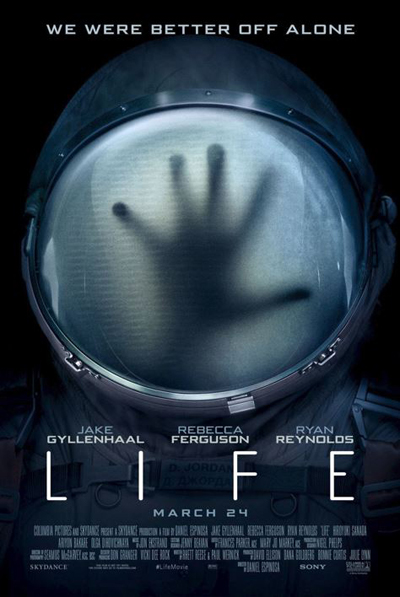
From there the movie becomes a grim struggle for survival as the astronauts match wits with the strangely resourceful and intelligent “Calvin,” as a schoolgirl has named it in a contest. To say anything about what happens next would spoil the movie for you, so I’ll fall back on my opening line. “You’ve seen it before.”
“Life” falls a smidge below the eye-catching and stomach-churning special effects of “Gravity,” but they’re still darned impressive, from soaring panaromas of the Earth and its landscape circling below to the weirdly unique environment of zero gravity inside the space station. (We even get a short tutorial on pooping in space. That toilet looked mighty small.)
Characters are thinly sketched as the monster mayhem ensues not long out of the gate. Jake Gyllenhaal is Dr. David Jordan, the station physician who seems slightly unhinged by his near record-setting time in space and does not want to return to Earth because a bad experience in Syria soured him on mankind. That moment of revelation is one of the few glimpses we receive of the man behind the doctor’s jumpsuit – and that’s more than what the other characters are given to bare except for station engineer Sho Murakami (Hiroyuki Sanada), who watches the birth of his child back on Earth via tablet.
Where the movie could have profited from its “Alien” DNA is in tension-building. Because the characters aren’t sufficiently developed and the action hurried onto the screen, it’s hard to care if they live or die. Director Espinosa should have followed Ridley Scott’s example and let us get to know these folks before exposing them to peril.
Some might interpret “Life” as a cautionary tale regarding the hubris of science, and they’d have plenty of ammunition. Again and again, science is portrayed as the rogue operator in this struggle of man vs. nature. But the movie never pursues that metaphor with any gusto. The missteps seem nothing more than means to achieve ends. Otherwise, there’d be no story.
“Life” deserves to be seen in a movie theater for its eye-popping special effects. The story itself is nothing special, and there are fewer thrills and chills than the trailers suggest.
Overall I would give it a grade of B-.
Del Stone Jr. is a former journalist and author.